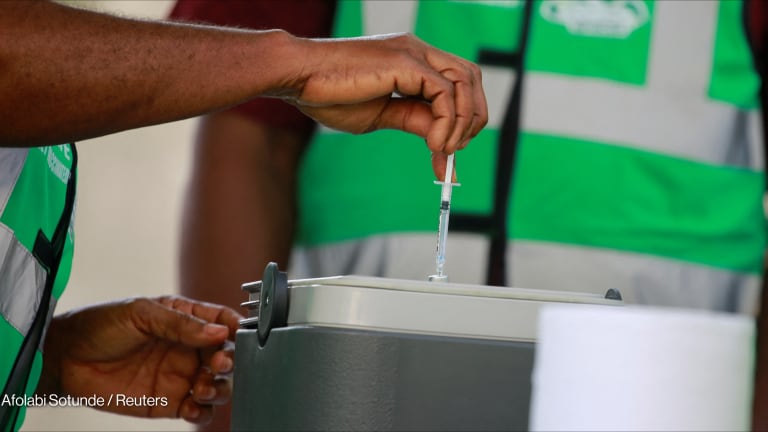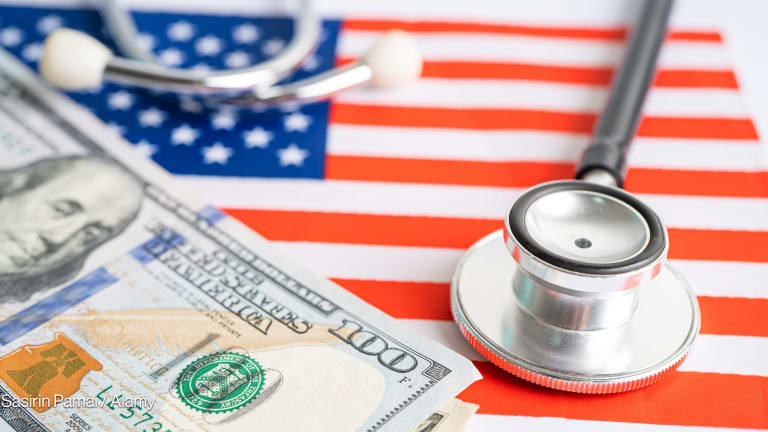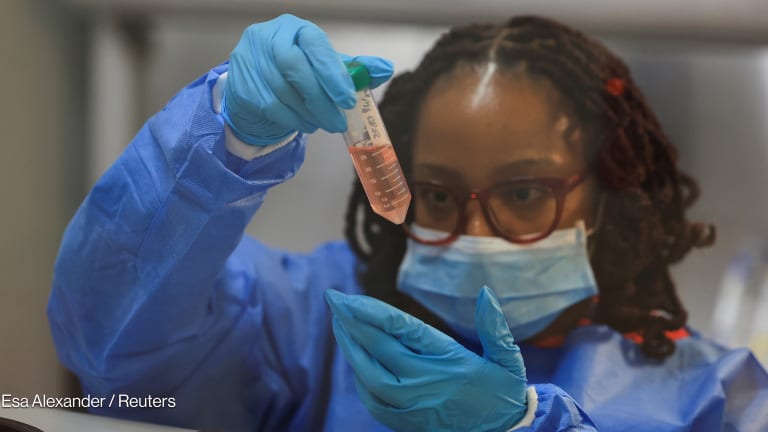
Protecting health workers and reaching rural populations is key to building back better post-COVID-19, says Dr. Raj Panjabi, the U.S. global malaria coordinator for the U.S. President’s Malaria Initiative, and co-founder of NGO Last Mile Health.
“I do think COVID-19 has highlighted the role again of community health workers as part of the challenge of stopping epidemics in their tracks,” he said. “I will wage my medical license that the COVID-19 major symptom is fever. Ebola's major symptom is fever, just like malaria’s is. And the next novel pathogen, I'd bet my license, will likely be a fever as well.”
That's critical, he added, because community health workers are the largest door-to-door fever surveillance network in the world.
Sign up for Devex CheckUp
The must-read weekly newsletter for exclusive global health news and insider insights.
“We've got to remember that while we need outbreak early warning systems, alarms don't ring themselves, health workers do,” Panjabi said. Yet a lack of personal protective equipment and other resources, including vaccines, means health workers are at risk.
“They're unvaccinated, unprotected, and for too long they've been underpaid so their working conditions have always been very challenging,” Panjabi said.
An internal PMI policy change now means that if a local government policy, in 1 of the 27 countries PMI operates, says that community health workers should be paid and USAID is in support of it, PMI dollars will be used to support the payment, he explained.
Ensuring community health workers are paid could also help in expanding the health workforce, which is set to see a shortage of 18 million workers by 2030 unless action is taken.
“Paying them is not only a fast way to create jobs; it's the kind of job that, in turn, creates the fastest way out of pandemics,” Panjabi said, adding that protecting health workers is also a key part to preventing pandemics such as malaria and COVID-19.
According to the World Health Organization, as of May over 115,000 health care workers had lost their lives during the pandemic.
Panjabi — who himself survived malaria several times growing up in Liberia before fleeing to America amid the civil war — recounted having to wear the same gown all day as a volunteer testing COVID-19 patients in the U.S. last summer. “I was worried because the anxiety of being unprotected while caring for patients with this virus is unlike anything else I've ever felt … Freedom from fear is something every single health worker in every community deserves to feel.”
To achieve that, Panjabi said health workers must be vaccinated — many countries have been unable to vaccinate high-risk populations, including those on the front lines. Beyond that, systems should allow for decentralized manufacturing and distribution of PPE and the bias against ensuring that rural areas have access to health care must also be confronted, he added.
About 75% of new infectious diseases are zoonotic pathogens, transmitted from animals to humans.
Creating policies that allow more focus on remote and rural areas, and providing more health care in rural areas — where humans might hunt, buy, sell, and eat animals — will help to achieve global objectives like ending malaria while protecting people’s safety from other outbreaks, Panjabi said.
If malaria can be detected in the home, tested in the home, less severe cases treated in the home, and get those more severe to a hospital more quickly, the chain of transmission can be broken, Panjabi said.
Visit the Building Back Health series for more coverage on how we can build back health systems that are more effective, equitable, and preventive. You can join the conversation using the hashtag #BuildingBackBetter.









